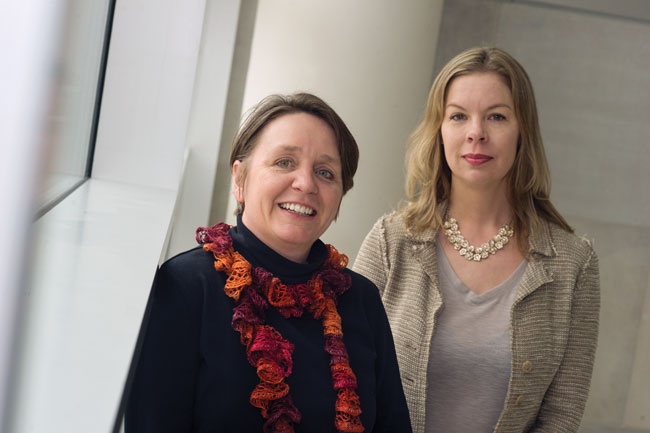dr. abc
Word Work
Study narrows the gap between the onset of language problems and subsequent diagnoses

Cynthia Kilpatrick and Jodi Tommerdahl
Language is a deceptively simple, powerful tool. As the writer Penelope Lively said, “Language tethers us to the world; without it, we spin like atoms.” Thus when children exhibit problems with early language acquisition, it is paramount that caregivers not only recognize the issue, but also address it as soon as possible.
Jodi Tommerdahl, associate professor of curriculum and instruction, and Cynthia Kilpatrick, assistant professor of linguistics, are conducting research that could lead to better language assessments for children and timelier intervention for language learning difficulties. For their study, Drs. Tommerdahl and Kilpatrick used hidden cameras to observe parent-child interactions, recording each dyad twice within a one-week period.
The researchers found that language concerns among children could reliably be diagnosed by analyzing smaller utterance samples—about 100 spoken words at a time—than previously thought.
“Clinicians and linguists spend a lot of time recording language samples,” says Kilpatrick. “You want the shortest sample possible to give you the best, most reliable results.” Smaller sample sizes could help clinicians speed up the diagnosis process and potentially help children much earlier in life.
“At the moment, language impairment is often undiagnosed, and when it is, it’s later than you’d want it to be,” explains Tommerdahl. “If we can find meaningful differences in typical and atypical language in children at age 2 instead of age 6, we’re just that much closer to developing more appropriate treatments for those kids and getting them back on track both in the linguistic and educational senses.”

















